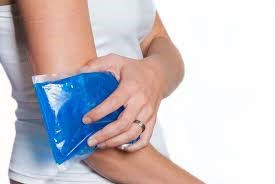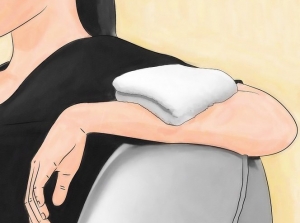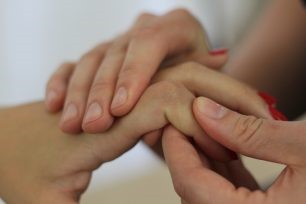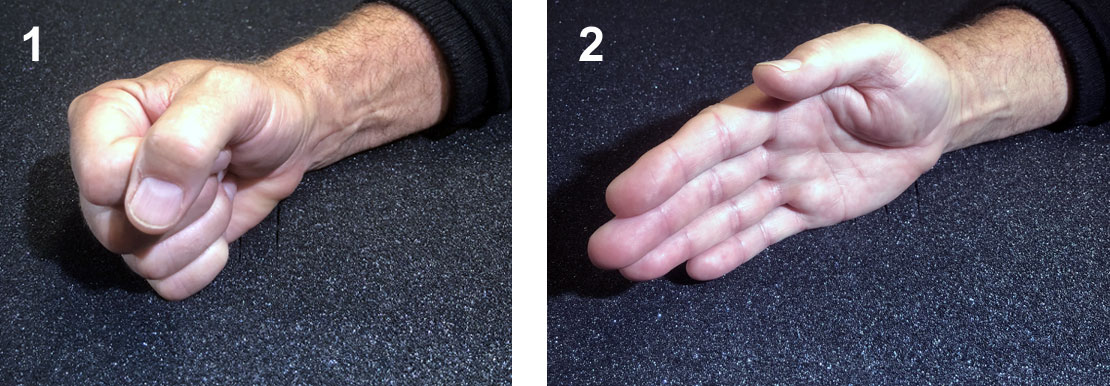Recovering from Hand or Wrist Surgery
Like any type of injury, recovery times will vary depending on the type of injury, the type of surgery, and the general health of the patient before the operation.
Some of us will recover after only a few days, others could take a few months. Always ask your doctor or surgeon before you have an operation, to get a defined recovery timetable which you can understand.
How long will your hand/wrist surgery recovery take?
Wrist surgery after a fracture
There are many ways that the bones in the wrist can break, so your recovery time will vary accordingly. You can expect on average a healing period of at least six weeks after a bone fracture. The most common type in the wrist is the distal radius fracture, which happens very often when you try to break a fall.
If your fracture is unstable, surgery might be the right option for you. After surgery, you may wear a fixed splint or cast for at least two weeks.
You may then have a removable splint fitted for four weeks. (see our BOA splints link) Physiotherapy starts after two weeks and continues for at least four to six weeks.
Wrist surgery recovery after carpal tunnel release
If you have carpal tunnel syndrome and nonsurgical techniques haven’t worked for you to relieve the pain, your consultant might recommend carpal tunnel release surgery. It is a common surgery for hands. The procedure is performed by making a small incision and cutting the ligament that is impeding the carpal tunnel or by inserting an endoscope (a tiny camera) into a very small incision, allowing the surgeon to cut the ligament with small instruments inserted into a second very small incision.
So recovery time for carpal tunnel release surgery depends on if the procedure was done on your dominant hand. This holds true for other types of hand surgery. If surgery was on your dominant hand, a recovery time of about four weeks is reasonable. With the non-dominant hand, the recovery time is generally less.
Wrist surgery recovery after tendon repair
Sometimes Tendon repair is recommended for patients with arthritis or overuse injuries which cause inflammation in the tendons that run along the back of the hand and wrist. As with carpal tunnel release surgery, this procedure can be performed either endoscopically or with an open incision giving more space and relieve pressure on the tendons. Recovery from this type of surgery is often three to five weeks. Again, you may wish to use a removable splint for a period.
Accelerating wrist surgery recovery
It is possible to decrease hand & wrist surgery recovery time by following your doctors recommendations … limiting activity, resting, and applying cold and compression therapy.
After your early recovery period- first few days to a couple weeks, physiotherapy will certainly help to restore your range of motion. The earlier you can begin movement the sooner you will get strength back and range of motion. Just ensure that initial healing has taken place first so you don’t damage any newly formed repairs.
Cold and compression therapy
This will help stop excess inflammation, reduce swelling, and relieve pain without relying on drugs. Cold compression therapy is crucial because excess inflammation can slow down the healing process. Equally, active compression can help speed up healing by removing excess fluids and encouraging fresh blood and nutrients to the surrounding tissues.
With any surgery there will be an amount of pain or discomfort in the postoperative period. Usually related to the natural inflammatory response which a body goes through after any tissue trauma. There will be some swelling, excess fluid build-up, pain, and other symptoms of inflammation. You may be prescribed medication for the pain straight after surgery, but remember you can reduce it very effectively by using active compression and cold therapy.
Try this for yourself it makes you more comfortable and speeds up your recovery…naturally
How to make and use your own cold compress
To make your own cold compress, you’ll need:
- ice (or frozen vegetables)
- washcloth
- water
- plastic bag
- towel
Step 1: Place ice cubes in a plastic bag. You can also substitute ice with a bag of frozen food. Peas are good. It’s best to use smaller vegetables so the bag will sit well on your skin. If you do need to use a bag of frozen food, fill up ice cube trays in the meantime. That way, you have a backup when the bag of frozen food thaws out.
You can also use a towel to make a cold compress if you don’t have ice:
- Dampen a towel with cold water and place it in a sealable plastic bag.
- Put the bag in the freezer for 15 minutes.
- Cold compresses made from wet towels may be more comfortable for sensitive areas,
Step 2: Run a washcloth under cold water and then wrap it around the plastic bag of ice. You can also dip the wash cloth into an ice bath if you don’t think it’s too cold against your skin.
Step 3: Place the homemade compress on your skin for up to 20 minutes.
Step 4: Dry the area with a towel after you’re done. You can also dab the skin as you hold the ice pack on yourself. The ice may start melting pretty quickly.
Re-apply: For swelling, reapply the compress after two hours. Keep doing this until the swelling goes away.
Fractures & Surgery…. after you remove the cast?
A wrist fracture more often than not is caused through a fall onto an outstretched hand. If your bone was re positioned well and your fracture was stable, a cast would have been fitted for some weeks.
If your bone was in a bad position or was likely to move, then surgery or wires inserted would have been normal before your cast was applied. A cast helps to keep your fracture still, making healing more likely.
What to expect
Four to six weeks is usual for new bone to repair a fracture. When the fracture clinic staff feels it is OK to start to move and use your wrist, your cast will be removed. This is when some patients find that their wrist is stiff, weak and uncomfortable. The skin can be dry or flaky, and often still has some swelling. Also it’s normal to get some pain after your fracture. Painkillers if given, will obviously help so take them as prescribed. It can make it possible to do your exercises and use your wrist for light activities. Always check instructions or ask your GP or a Pharmacist if you are unsure about over the counter painkillers.
If your pain is continuous or excessive you should contact your GP.
The new bone gradually becomes stronger over the next few months as it reforms. It will remain tender and could cause concern if you bang or strain it. To start with your muscles will be weak, but they will slowly but surely build up as you start to exercise your hand and wrist.
When can I start to use my hand and wrist?
When your cast removed it’s important to try and use your hand and wrist as normally as possible. Make a start with light activities, fastening buttons, washing your face, brushing hair, eating, etc. Progress to heavier activities e.g. lifting cooking utensils, pots & pans, carrying a bag of shopping etc as pain allows. But be extra careful with babies and small children. Do not risk lifting heavy objects or containers of hot liquid until you are completely confident that your hand and wrist feel strong enough.
It’s certainly a good idea to try wearing a wrist support during this ‘getting stronger phase’
Wear a support/brace which will allow you to use your hand for tasks like housework but then remove for lighter activities and when you rest or sleep. You should try to wear the support less and less after a few weeks. Don’t rush the process, best to wait until you are fully confident with your hand & wrist functions before you remove the support.
Managing swelling and pain
Thankfully there are a few things you can do to help decrease swelling and pain.
- Try and not let your hand hang down, make the most of your hand and ‘join’ in with activities.
- Between activity raise the arm and hand by using two pillows on your chair arm, clench and spreading your hand frequently.
- Be aware that not using your hand as well as overdoing it can increase swelling.
- Bathing your hand in warm water for 10 mins a couple of times day can help – as long as scars are healed. Rub gently with a towel to dry the part and then gently massage, use a small amount of oil or cream
How soon will I be able to resume normal activities?
Most wrist fractures will progress very well and your wrist will strengthen satisfactorily. But you may never quite gain the range of movement you had in your wrist before your fracture.
By three months after the fracture you should find you can manage most day to day tasks, however it is likely your wrist will continue to improve for at least 1 year following your injury
How do I get my wrist/hand moving and strong again?
Whilst in the cast your muscles will have weakened and the joints become stiffer, but this will improve given time. Using your hand as normally as you can is the most important thing you can do to improve your function and strength. It may be difficult at first, but persevere and it will get easier.
Top 5 Tips for recovery from hand & wrist surgery
The purpose of rehabilitation following a wrist fracture and surgery is to help you regain the functional use of your hand, wrist and upper extremity.
- Elevate your hand to decrease swelling. It’s really important that an elevated position is maintained night & day. Patients should NEVER keep their hand down by their side for long periods of time. The hand needs to be above the level of the heart so that gravity can help move fluid back toward the heart. Use 2-3 pillows to support the arm in the lap when seated, and keep it above the heart level on a pillow or two during sleep. Patients may be instructed to use a sling for elevation, especially when venturing outside. But be mindful that over-reliance on a sling may cause elbow and shoulder stiffness.
- Begin moving all your fingers as soon as possible to avoid stiffness.
- Use Ice to reduce inflammation. Cold compression- Icing the wrist can help relieve pain and inflammation. Ask your Physiotherapist for advice specific to your injury, but in simple terms ice or cold gel packs may be used several times a day for about 20 minutes at a time. Cold gel packs can be purchased at most high St Chemists.
- Ask to see a Physiotherapist who is a Certified Hand specialist. These are Physios or occupational therapists who have a specialized certification, an ideal therapist for any type of injury to the hand.
- Follow your surgeon’s recommendations for full activity. But be patient, you’ll be back to full activity in due time, so don’t rush it!
Conclusion: Restoring strength and function after a fracture
After the first six weeks of therapy, once bone healing is determined to be firm and secure, rehabilitation will focus on the full restoration of strength and function. While types of wrist fractures and their surgical treatments vary, the core principles of fracture rehabilitation are consistent.
Physiotherapy
Unless you decide otherwise or have almost full range of movement immediately after your cast has been removed, you will be referred to physiotherapy out-patients- to continue your rehabilitation.
A therapist will customize each treatment plan according to the patient’s specific needs. Following your assessment, the physiotherapist will choose from a range of treatment techniques. They will provide you with the right exercises to practice at home.
These exercises are vitally important to ensure you give yourself the best chance recovering completely in the shortest time.
Every patient’s injury, lifestyle and recovery varies; it’s difficult to give definite timescales for this and so should be discussed individually with your Physio.
Exercises – No pain No gain!
The exercises shown below may help improve movement and strength. If you can, do them all three to four times a day, even if your wrist / hand is painful as they are important. If you have been prescribed painkillers then it is helpful to take them as they will allow you to do your exercises easier. Expect to feel some discomfort but don’t push into severe pain.
It is important that you start to exercise your wrist as soon as you can after your cast has been removed. By exercising and regaining normal movements the feeling of stiffness and pain should gradually reduce.
Exercise 1. Using your wrist only, move your hand down towards the floor. Hold for 10 seconds. Now move your wrist up towards the ceiling. Hold for 10 seconds.
Exercise 2. If you find that your fingers and elbow joint feel stiff, then the following exercise will help.
Touch your thumb with the tip of each finger. Make a tight fist. Ensure your knuckles are bent to a right angle and hold for 10 seconds. Now fully straighten the fingers and hold for 10 seconds.
Exercise 3. Hold your hand out with the palm facing upwards. Touch your thumb to the base of your little finger and hold for 10 seconds. Now stretch the thumb out the opposite way and hold for 10 seconds.
Exercise 4. Rest the palm of your hand on a table. Without moving your forearm, slide your hand one way until you feel a stretch. Hold this for 10 seconds. Now slide your hand the opposite way, feel a stretch again and hold for 10 seconds.
Exercise 5. Bend your elbow up towards you as far as possible. Feel it stretching and hold for 10 seconds. Now straighten it out as far as you are able, feel the stretch and hold for 10 seconds.
Exercise 6. Bend your elbow and tuck it into your side. Now turn your palm as far as possible upwards and feel a stretch. Hold for 10 seconds. Now turn your hand back over again without moving your elbow. Feel the stretch again and hold for 10 seconds.























